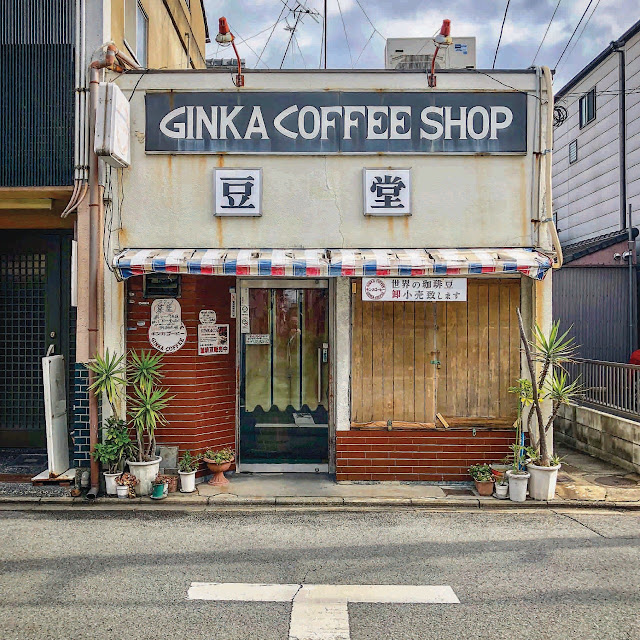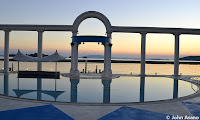In the second part of this three-part series on Okayama Prefecture we will continue exploring the southern area of Okayama Prefecture which includes Okayama City, Kurashiki, Akaiwa, Bizen and Setouchi. If you missed it, you can catch part 1 of the series
here, which focuses on Okayama City and Kurashiki.
The southern part of Okayama Prefecture is famous for its traditional pottery, legendary Japanese samurai swords, olive gardens, spectacular sunsets and Mediterranean Sea like coast.
Akaiwa
Akaiwa is a city in Okayama Prefecture that is one of the three remaining places in Japan that produces the bamboo stalk for
fude (ink brushes). It is also famous for its top quality Omachi rice, which can mean only one thing, top-notch sake.
The
Muromachi Shuzo Sake Brewery was founded in 1688, making it the oldest existing sake brewery in Okayama Prefecture with a history of over 320 years. The sake brewery takes great pride in its products with its traditional techniques handed down from generation to generation. The award-winning sake is made using Omachi cold spring water (one of the Top 100 Great Springs of Japan) and Omachi rice, the only pure strain of rice left in Japan, which is produced locally in Akaiwa.
 |
| Gold medal sake at Muromachi Shuzo Sake Brewery in Akaiwa |
Inbe
About 20 kms from Akaiwa is Inbe, a town in Bizen City, which is the home of Bizen-yaki Pottery, the oldest and most revered form of pottery in all of Japan. During the Kamakura Period (1185-1338) Bizen came to prominence as one of the six pottery producing centers in Japan.
Today, Bizen Pottery is renowned for its strength and beauty throughout Japan. Bizen Pottery with its unique unglazed natural reddish or brownish colour was rougher and fired at higher temperatures to produce a more durable type of pottery. Bizen Pottery is said to be so strong that even if you throw it, it will not break easily. It also said that the water preserving qualities of the pottery allow flowers to last longer in Bizen vases and beer to stay colder with a creamer head in Bizen cups.
Inbe Minami Ogama Ato is where the South Large Kiln for making Bizen Pottery was placed. It was used as a communal kiln during the golden age of Bizen ware in the Momoyama (1568-1600) and Edo period (1600-1868). Today the hill is covered with broken pieces of Bizen-yaki that were thrown there after breaking during the firing process. It is an interesting place to visit giving you a glimpse of the history of Bizen ware and a great view of the city from the top of the hill.
 |
| View over Inbe from Inbe Minami Ogama Ato |
Bizen-yaki Dento Sangyo Kaikan is both a tourist information center and a café where you can enjoy a cup of coffee in traditional Bizen ware cups, or head upstairs and enjoy the gallery for Bizen-yaki artists, where you can purchase many kinds of Bizen ware pieces.
 |
| Bizen-yaki on display at the Bizen-yaki Dento Sangyo Kaikan |
If you are feeling the creative juices flowing and want to give this unique art form a try, check out the
Bizen-yaki Tokichi pottery experience to create Bizen ware that will be fired and posted out to you when complete.
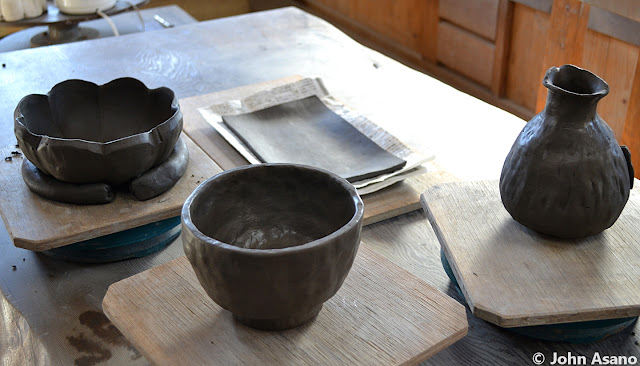 |
| Bizen-yaki Tokichi Pottery Experience |
Amatsu Shrine is a Shinto shrine dedicated to Bizen Pottery. The shrine founded in 1411 enshrines the patron god of the birthplace of Bizen Yaki. Bizen Pottery can be found everywhere here from the Guardian shrine dogs that stand at the entrance of the shrine and the shrine’s roof tiles to the path approaching the shrine, which is lined with tiles contributed by local Bizen Pottery artists. Different bits and pieces of Bizen Pottery can be found all over the shrine precincts such as Bizen ware talisman and the Seven Lucky Gods of Fortune.
 |
| Amatsu Shrine in Inbe |
Feeling hungry? Stop by
Kokorozushi for fresh sushi served on Bizen ware plates. This place serves some of the best sushi I’ve had in Japan which tastes even better when served on a beautiful Bizen-yaki plate made by local artists.
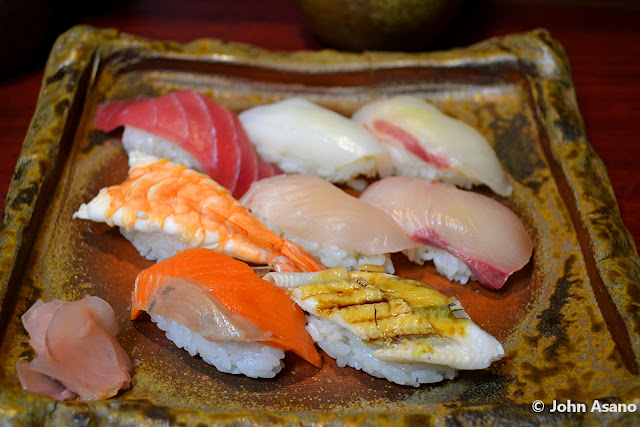 |
| Fresh sushi served on a Bizen-yaki plate at Kokorozushi in Inbe |
Osafune
Osafune is a town in Setouchi City, which once flourished as a major producer of Japanese swords.
The
Bizen Osafune Japanese Sword Museum in Osafune is the home of the Japanese sword and is perfect place if you are a samurai fan like myself. The Bizen area was one of five major sword making areas in Japan during the age of the samurai, so has a long history and reputation for producing top-quality swords. There are three essential elements to producing quality swords: their use (ability to cut), their beauty (appearance) and their spirit (passed from the flames by the master sword-smith). Around half of the existing swords designated as National Treasures of Japan were made in Bizen.
The iron-rich mountains around Bizen provided the quality raw materials necessary to produce legendary Japanese swords that are now regarded as works of art. Here you can witness traditional sword forging techniques and view some of the many masterpieces that are on display.
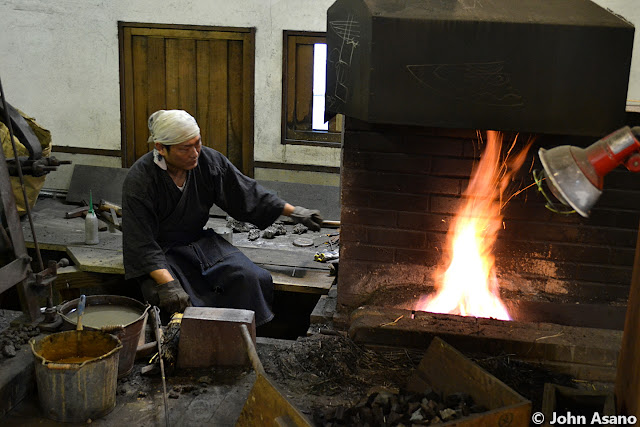 |
| The Bizen Osafune Japanese Sword Museum in Osafune |
Setouchi
Ushimado in Setouchi City is a seaside resort town that overlooks the many beautiful islands that dot the Setonaikai (Seto Inland Sea). It is the perfect place to admire the Seto Inland Sea, which is called the “Aegean Sea of Japan”. Here you can enjoy the beautiful island scenery of the Setonaikai while admiring the stunning sunset, which is regarded as one of the “Best 100 Sunsets in Japan”. Take a stroll or leisurely ride up to the Ushimado Olive Garden for some breathtaking views of the blue sea and Seto Islands mixed in with the green of the olive groves.
 |
| View of the Seto Inland Sea from the Ushimado Olive Garden |
The
Hotel Limani & Spa in Ushimado is a resort hotel inspired by the Greek Islands. If the scenery, architecture, blue and white colours don’t get you then the authentic Greek food prepared by the head chef, a Greek-Australian will definitely make you feel like you are in Greece. The dry-aged Okayama beef is to die for but if you are after something truly special give the chicken & lamb Gyros a try.
 |
| The Hotel Limani & Spa in Ushimado |
I hope you enjoyed learning a bit more about some of the great attractions that southern Okayama Prefecture has to offer the keen traveler. Please stay tuned for part 3 where we will explore the northern area of Okayama Prefecture.
 |
| The Seto Inland Sea from The Hotel Limani & Spa in Ushimado |














